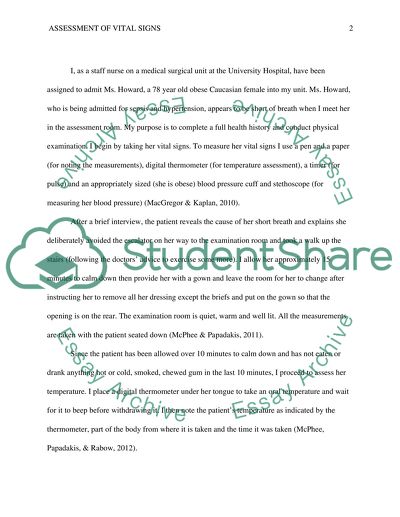Assessment of Vital SIgns Essay Example | Topics and Well Written Essays - 500 words. Retrieved from https://studentshare.org/nursing/1645860-assessment-of-vital-signs
Assessment of Vital SIgns Essay Example | Topics and Well Written Essays - 500 Words. https://studentshare.org/nursing/1645860-assessment-of-vital-signs.


